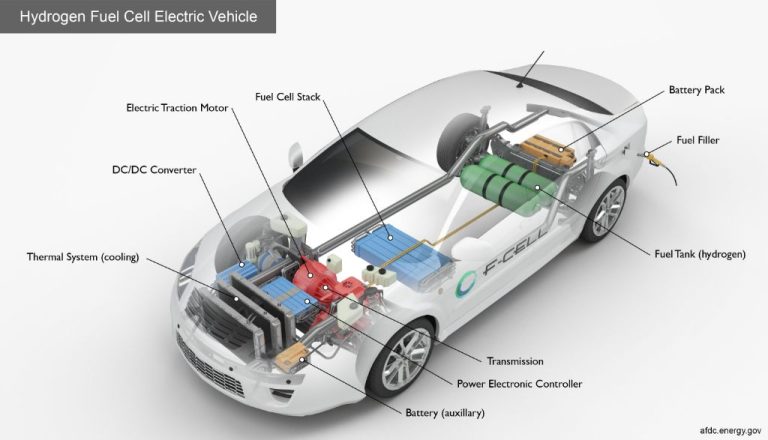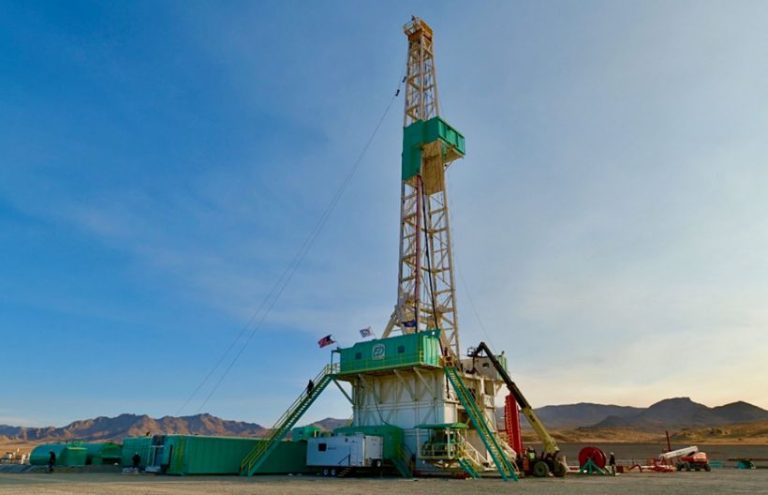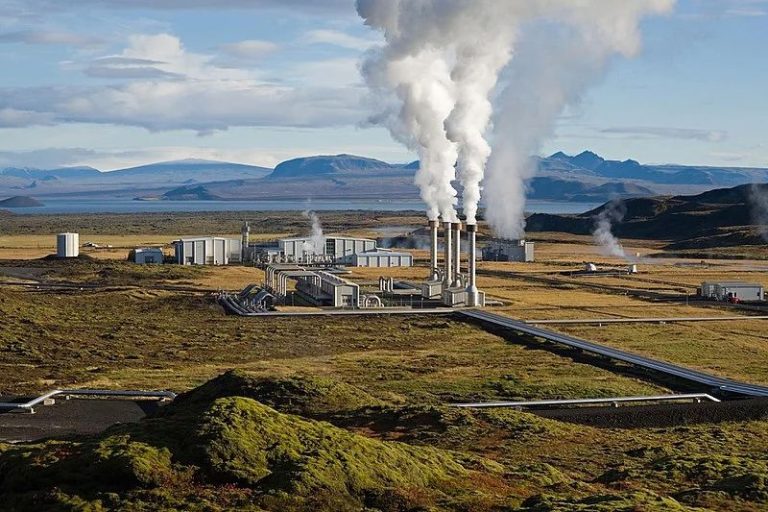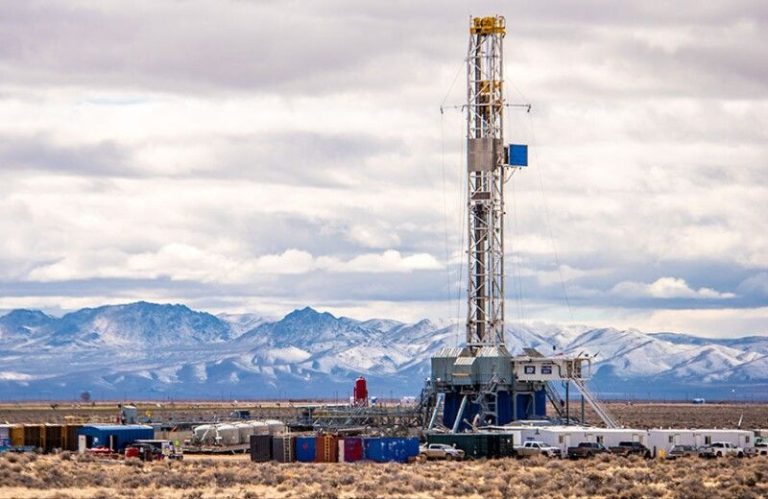Is Geothermal Energy Intermittent?
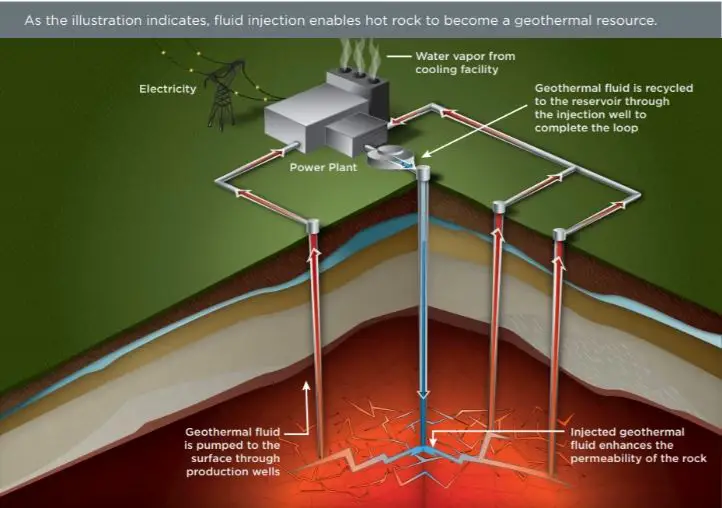
Geothermal energy is thermal energy generated and stored in the Earth derived from the heat in the core of the planet that slowly conducts outward. Geothermal energy is harnessed by extracting hot water or steam reservoirs in the Earth’s crust to generate power. Geothermal power plants tap into underground reservoirs of hot water to spin turbines and generate electricity. The heat energy is already contained in the water or steam coming from the Earth.
Understanding whether a renewable energy source like geothermal is intermittent or not is important. Intermittent energy sources only generate power when the resource is available. The sun does not always shine and the wind does not always blow, making solar and wind intermittent. Knowing if geothermal power suffers interruptions like solar and wind is key for evaluating its viability as a clean energy source.
Geothermal Energy Overview
Geothermal energy utilizes the earth’s internal heat that is stored in rocks and fluids beneath the surface. This heat energy can be harnessed in a few different ways to produce electricity and provide heating and cooling. The three main types of geothermal energy systems are:
- Direct use and district heating systems – These systems pump hot water from underground reservoirs to the surface to provide heat for buildings, greenhouses, aquaculture and other applications.
- Electricity generation – Geothermal power plants use wells and pumps to bring hot water or steam from deep underground reservoirs to the surface. This steam spins turbines that activate generators and produce electricity.
- Geothermal heat pumps – These systems take advantage of shallow ground temperatures to heat and cool buildings. Pipes just below the surface transfer heat between the building and the ground.
In each type of system, geothermal energy utilizes heat from beneath the earth’s surface that has been naturally warmed by hot molten rock. This heat energy can be accessed via wells and pump systems to provide renewable power and heating.
Definition of Intermittent
The term “intermittent” refers to energy sources that are not continuously available or predictable. Intermittent energy sources will fluctuate in their power output based on weather conditions or other external factors. Intermittent electricity generally comes from renewable sources like solar, wind, tidal or wave power that rely on environmental conditions to generate electricity.
Intermittent energy contrasts with more predictable and consistent energy sources like fossil fuels, nuclear, geothermal, and hydroelectric. With intermittent renewables like solar and wind, the power generation can start and stop based on cloud cover or wind speeds. This makes matching electricity supply with demand more challenging compared to always-on power sources.
Overall, intermittent describes renewable energy sources that have variable output dependent on external factors, unlike always-available baseload power. Intermittency poses grid management challenges but can be balanced through storage, forecasting, and transmission connections.
Factors Impacting Geothermal Consistency
There are several key factors that impact the consistency and reliability of geothermal energy generation:
Geographic location – The location of the geothermal reservoir determines the temperature and pressure of the resource, which directly impacts energy output. Reservoirs in tectonically active locations like Western North America tend to have higher temperatures and more consistent output (Energy.gov).
Type of system – Binary cycle geothermal plants that use a secondary fluid have more consistent output than flash steam plants that rely solely on naturally occurring steam. However, flash systems can operate with lower temperature reservoirs (UMich).
Reservoir characteristics – The depth, permeability, fluid contents and subsurface structure of the geothermal reservoir all impact the amount and sustainability of energy extracted. Larger, deeper reservoirs with natural recharge tend to have higher capacity factors (Energy.gov).
Comparisons to Other Renewables
Unlike wind, solar, and hydroelectric power, geothermal energy offers consistent baseload power generation regardless of weather or time of day. This makes geothermal a reliable renewable energy source that can complement intermittent sources like wind and solar. While wind and solar power fluctuate based on environmental conditions like wind speed, cloud cover and time of day, geothermal plants operate continuously at steady output levels. For example, the average capacity factor for wind power is around 35%, compared to over 90% for geothermal power plants (1).
Solar and wind energy rely on ambient natural processes that are variable in nature. Solar energy relies on sufficient sunlight penetrating the atmosphere, which changes with weather, seasons, and time of day. Wind turbines need adequate wind speed to spin their blades, which also depends on daily and seasonal weather patterns. In contrast, geothermal energy taps heat from deep underground reservoirs of hot water or steam that is always available (2).
The intermittent nature of wind and solar often requires backup power sources when output is low. Geothermal’s consistent baseload generation can provide this backup and balance the grid system. Pairing geothermal with intermittent renewables like solar PV and wind turbines can create a resilient hybrid system (3).
While hydroelectric dams also offer baseload renewable power, their output depends on seasonal rainfall patterns and water levels. Multi-year droughts can significantly reduce hydroelectric generation. Geothermal plants pull heat from underground reservoirs unaffected by weather, so they operate more consistently than hydroelectric dams.
Sources:
(1) https://blog.ecoflow.com/us/solar-energy-vs-geothermal-energy/
(2) https://www.energy.gov/eere/geothermal/geothermal-faqs
(3) https://energy5.com/discovering-the-advantages-of-geothermal-and-solar-energy-in-a-sustainable-future
Geothermal Base Load Benefits
One of the key benefits of geothermal energy is that it provides consistent baseload power to the grid. Unlike solar or wind power, geothermal is available 24/7, 365 days a year.
“Geothermal power plants produce electricity consistently, running 24 hours a day, 7 days a week. The power is called ‘baseload’ because it serves as the minimum power grid operators need to supply customers.” U.S. Department of Energy
This always-on availability makes geothermal a reliable source of renewable energy. Geothermal plants provide steady power to the grid, helping balance supply and demand. This enhances grid stability and resilience.
Geothermal’s constant output contrasts with solar or wind, which only generate power when weather conditions permit. The baseload benefits of geothermal allow it to serve as the “foundation” for clean energy grids.
Maintenance and Downtime
Geothermal systems require both planned and unplanned maintenance that can cause downtime and potential interruptions in power generation. Planned maintenance is performed regularly to ensure optimal performance and longevity of the system. This includes checking and replacing filters, lubricating pumps and fans, inspecting pipes and seals for leaks, and testing safety devices (Geothermal Maintenance Checklist). While planned maintenance causes predictable downtime, unplanned issues can also arise. Leaks, pump failures, control system malfunctions, and ground loop problems may require emergency repairs causing unpredictable downtime (Does a Geothermal System Need Winter Maintenance?).
While all mechanical systems are subject to maintenance requirements and potential downtime, geothermal systems are generally reliable with maintenance typically scheduled only 1-2 times per year. The underground piping loop tends to have a long service life with minimal repairs needed over decades of operation. With proactive maintenance and monitoring, downtime can be minimized. However, unplanned downtime can interrupt generation ranging from hours to days depending on repair requirements.
External Impacts on Output
Geothermal power plants are not completely immune to external factors that can impact energy output, though disruptions are relatively rare compared to other renewable sources like solar and wind power. One potential external factor is weather and climate conditions.
According to a 2021 study published in Geothermal Energy, climate is the main factor influencing the effective use of geothermal resources (Ciapała, 2021). While geothermal energy relies on heat from the Earth’s core that exists independently of weather, climate factors like precipitation and temperature at the surface level can impact aspects like reservoir productivity over time.
However, experts note geothermal energy is far less intermittent compared to solar and wind, with minimal variability in output. According to the United Nations University, geothermal energy is “constant and independent of weather conditions” with its heat source existing about 6,000 km underground (UNU, 2022). Overall, geothermal plants tend to demonstrate high capacity factors and reliable base load power generation.
Another potential external disruption is seismic activity, though major disruptions are very rare. While geothermal sites are often located in seismically active regions, plants are designed to withstand earthquake risks and shutdowns after seismic events are usually precautionary. According to Lewis (2015), no major damage to geothermal plants from earthquakes has been documented over decades of operation worldwide.
Conclusions
The evidence shows that geothermal energy can provide consistent base load renewable power, unlike wind or solar which fluctuate based on weather conditions. While geothermal plants may undergo scheduled maintenance or require downtime for repairs, the geothermal resource itself provides a continuous supply of heat energy. Research indicates geothermal reservoirs are unlikely to deplete or shorten in lifespan, barring major seismic activity or over-extraction of fluids. Geothermal offers a reliable renewables option, and a valuable bridge as we continue to build out variable sources and storage solutions.
Further Reading
To learn more about geothermal energy and its intermittency, the following resources are recommended:
An experimental investigation of the influence of intermittent and continuous operations on energy extracted, ground and pile temperatures (Faizal et al., 2016) – This article provides an in-depth experimental analysis of geothermal system operations and their impacts on energy output and ground temperatures.
Trends and prospects of geothermal energy as an alternative renewable energy resource in Bangladesh (Islam et al., 2022) – This paper discusses geothermal potential in Bangladesh and analyzes factors impacting consistency of output.
Geothermal Source Exploitation for Energy Saving and Sustainable Development (Vicidomini et al., 2022) – This editorial provides a broad overview of geothermal exploitation and sustainability factors.

